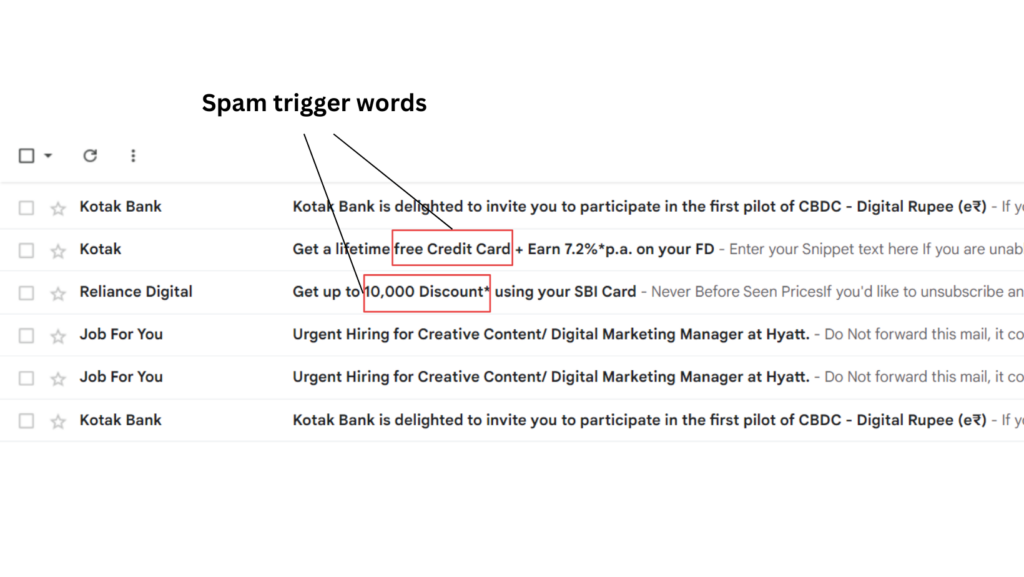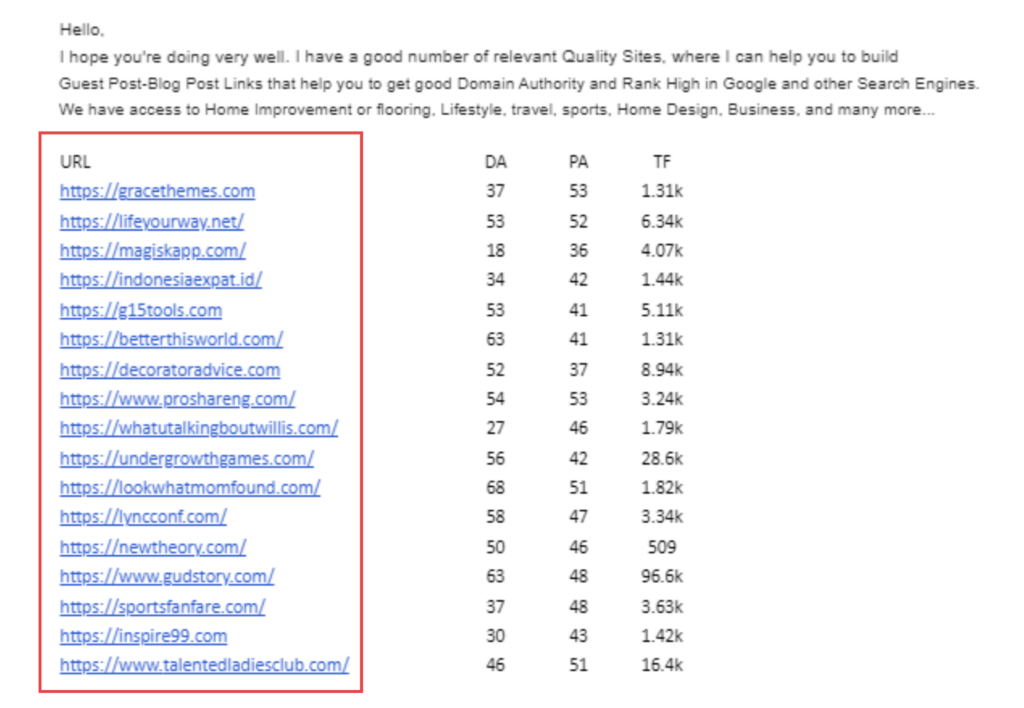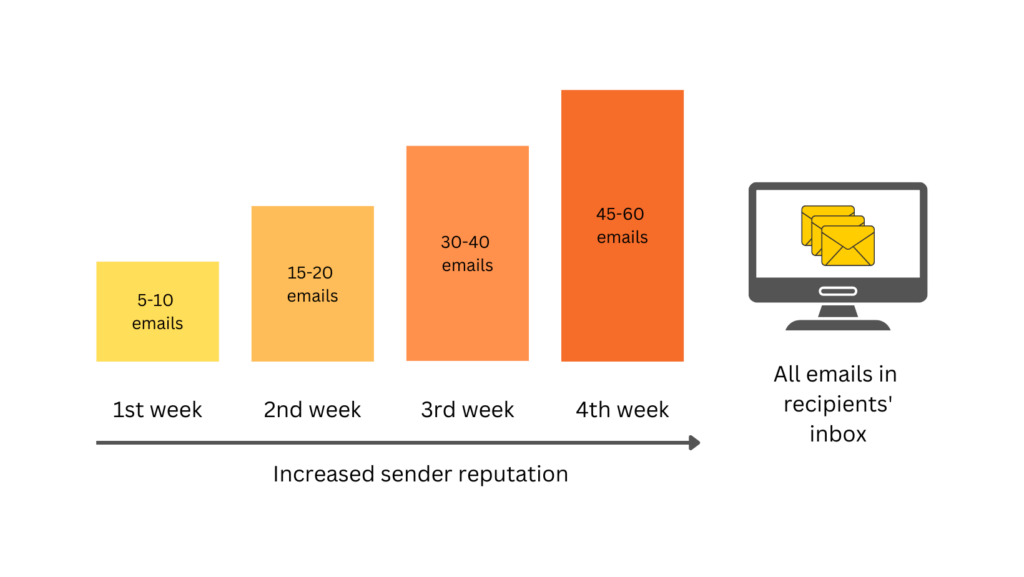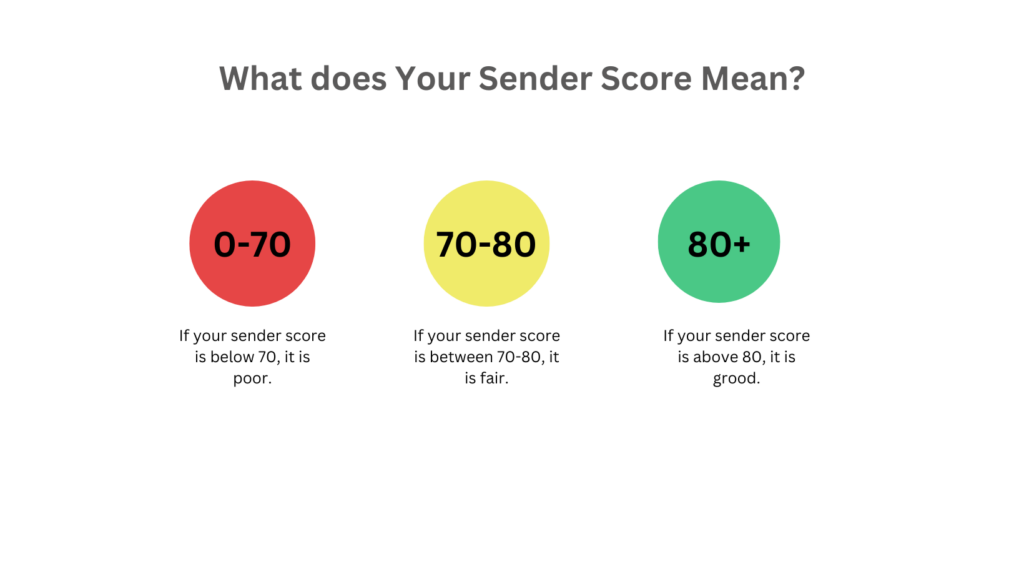No matter if you’re just starting your business or a seasoned professional, the spam folder can be a frustrating hurdle to overcome. In this blog post, we’re going to explore why emails go to spam instead of inbox and share some effective best practices to help you steer clear of these issues.
So, let’s dive in and discover how to keep your emails where they belong – in your customer’s inbox.
Why do emails go to spam instead of inbox?
There are several reasons why emails go to spam instead of inbox. Here we have highlighted the major ones.
1. You Have a Low IP Reputation
Your IP reputation is like your digital scorecard in the world of email marketing. It reflects the trustworthiness of your IP address and the reputation of the sender behind it.
If your IP address has a history of spammy behavior, it’s more likely that your emails will be sent into the spam folder.
2. Your Content Is Irrelevant
Relevance is the base of successful email marketing. When your email content doesn’t align with the interests and needs of your subscribers, email filters might identify it as spam.
For instance, you run a pet supplies store, but you send an email featuring computer software deals to your subscribers interested in animal products.
The mismatch between their expectations and the email content results in a quick click of the “spam” button.
3. You Don’t Provide an Unsubscribe Link
Every email you send should include a clear and easy-to-find unsubscribe link. Not offering this option not only frustrates recipients but also breaches email marketing regulations.
They might resort to marking your emails as spam out of frustration, which can negatively impact your sender’s reputation.
4. You’re Using Spam Trigger Words
Some words and phrases have a notorious reputation for triggering spam filters. These terms are often associated with misleading or overly promotional content.
Example: Using phrases like “Get Rich Quick” or “100% Free” in your subject line or email body can raise red flags with spam filters. Even if your intentions are legitimate, the use of these trigger words can result in your email being labeled as spam.

6. You Have Low Engagement Rates
Low engagement is a warning signal for email service providers. You can refer to this chart from WebFx to check the average engagement rates as per your industry.
If recipients rarely open or click on your emails, this lack of engagement can result in your emails being filtered into the spam folder.
Example: If only a small percentage of your subscribers open your emails or click on your links, email providers may infer that your content isn’t valuable to recipients, potentially affecting your email deliverability.
7. You’re Sending Too Many Attachments
Including too many links/attachments in your emails can make them bulky, slow to load, and can trigger spam filters. This is especially true if you’re sending large files or attachments that raise suspicions.

Best practices to avoid spam folder
1. Warm up your account
When using a new IP address for sending emails, it’s essential to start slowly and gradually increase your email volume. This process, known as “warming up,” allows email service providers to establish trust in your IP address.

Steps to follow
- Begin with a small number of emails to a highly engaged segment of your list.
- Gradually increase your sending volume over a few weeks.
- Monitor your delivery and spam placement to ensure a smooth transition.
2. Building your email list
A high-quality email list is the cornerstone of successful email marketing. Focus on growing your list organically by encouraging subscriptions from genuinely interested individuals. Avoid shortcuts like purchasing or renting email lists, as these often lead to spam issues.
Steps to follow
- Create intriguing sign-up forms on your website and social media platforms.
- Offer incentives like exclusive content or discounts to encourage visitors to subscribe.
- Always obtain explicit consent from individuals before adding them to your list.
3. Monitoring reputation
Regularly check your sender’s reputation using tools like Sender Score. A good reputation enhances your email deliverability. If you notice a decline, take corrective action promptly to rebuild trust with email service providers.

Steps to follow
- Keep a close eye on your sender’s reputation.
- Address any issues that may arise by adhering to best email marketing practices, as this will help maintain a positive reputation.
4. Monitoring the engagement metrics
Regularly track key engagement metrics like open rates, click-through rates, and unsubscribe rates to gauge the effectiveness of your email campaigns.
Steps to follow
- Analyze your open and click-through rates to identify what content and subject lines resonate with your audience.
- Address low engagement by refining your email content, sending at the right time, and segmenting your list.
- Monitor the number of spam complaints and take immediate action to reduce them.
5. Improving your email content
Crafting engaging and valuable email content is essential to prevent your emails from being marked as spam.
Steps to follow
- Personalize your emails to make them more relevant to each recipient.
- Craft compelling subject lines to entice recipients to open your emails.
- Focus on providing valuable, informative, and entertaining content that resonates with your target audience.
- Use A/B testing to determine what type of content and messaging works best for your subscribers.
Conclusion
By understanding why emails go to spam instead of inbox and following best practices, you can improve your email deliverability and ensure your messages reach the inbox. Remember, a well-reputed sender with engaging, relevant content is more likely to thrive in the world of email marketing.
With the help of safeMailer a cold email automation tool you will able to create engaging emails to connect with your audience effectively. Also, instead of going into the spam folder, you will land in the inbox.

Leave a Reply